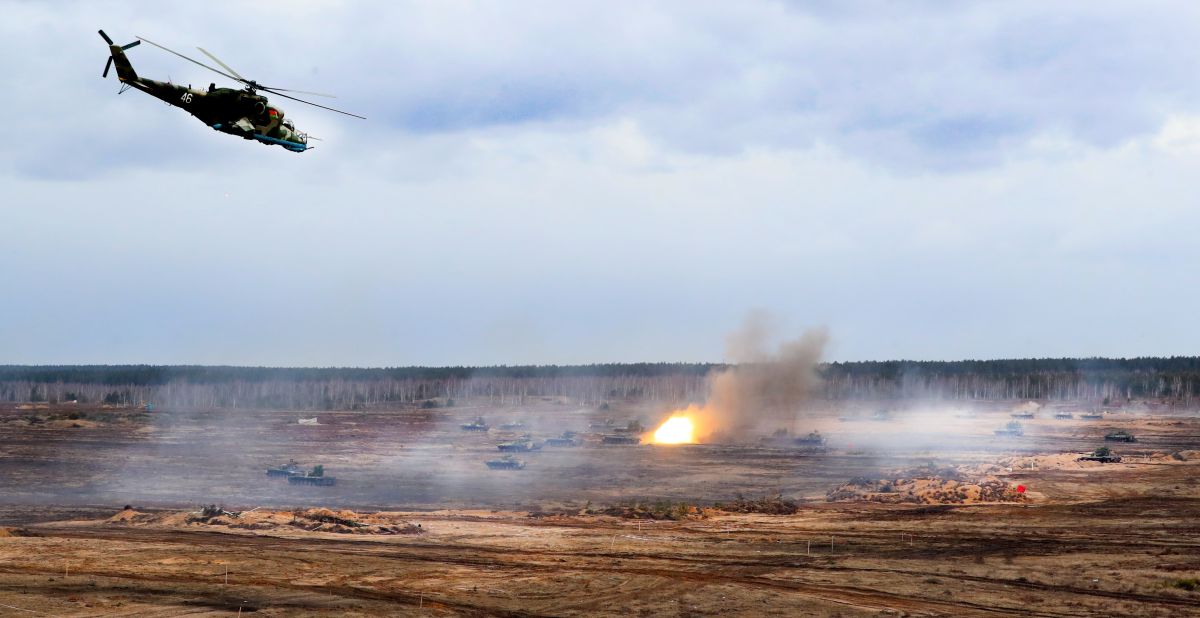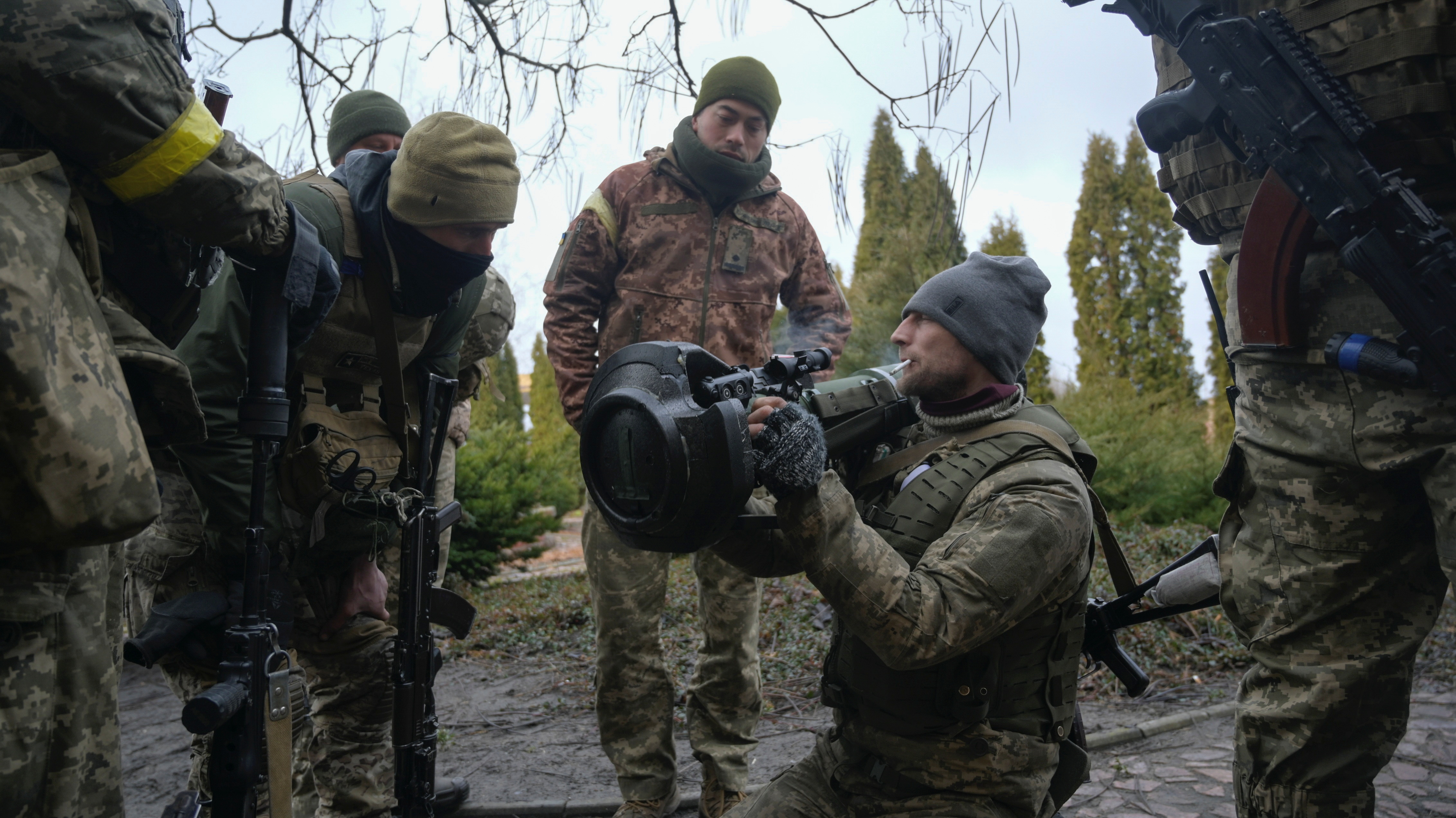The Military Situation in Ukraine
Military operations in Ukraine continued in four directions—two in the south of the country, one in the east, and one in the north. In all these regions, especially in encircled cities, such as Mariupol and Kharkiv, the humanitarian situation is deteriorating. Despite suffering significant losses, Russia still has the ability to support its fighting units, although it still has difficulties, especially with logistics.
 IRINA RYBAKOVA/PRESS SERVICE OF/Reuters/Forum
IRINA RYBAKOVA/PRESS SERVICE OF/Reuters/Forum
What is the current military situation?
Russia has been carrying out its activities in four main directions. In the north of Ukraine, it is encircling Kyiv and making an attempt to conquer the city; however, intense fighting continues in the northern and western suburbs of the capital. So far, Russia’s goal here has not been achieved, and taking into account the effectiveness of the Ukrainian defence, including in the eastern outskirts of Kyiv and the city residents’ anti-occupation activities, pressing further will incur significant damage and losses among civilians.
Intensive activities were carried out in the east of the country (Kharkiv, Sumy, Siverskodonetsk) where Russian artillery and missile strikes mainly struck civilian targets. The Russian operation in southern Ukraine is progressing relatively efficiently. Military activities are being carried out towards Zaporizhzhia, and further activities in the direction of Kryvyi Rih can be expected. However, Russian troops and militias from the separatist so-called “people’s republics” have still failed to capture Mariupol.
What is the status of the defence of Ukraine?
Ukraine is consistently implementing its defence plan, which involves delaying the movement of Russian troops by destroying military supply columns and harassing enemy forces with attacks using portable anti-tank systems and drones. In combat manoeuvring, Ukraine also continues to use armoured and mechanised troops. Ukraine still has prevented Russia from achieving full control of its airspace. Territorial defence units are also carrying out intensive activities, mainly anti-diversionary actions. Social mobilisation remains strong, even in the cities occupied by the Russian military where civilians are protesting the occupation. According to the Ukrainian General Staff’s morning communiqué of 9 March, Russia has lost 12,000 military personnel (the Pentagon estimates are between 2,000 and 4,000 troops), 317 tanks, 1,070 infantry fighting vehicles, 120 artillery systems, 56 multiple rocket launchers, 49 airplanes, 81 helicopters, and 7 unmanned aerial vehicles. These data are probably overestimated, but they show consistency in the implementation of the defence operation.
What will the military operations look like in the coming days and weeks?
In Ukraine, Russia has now engaged 175,000–200,000 troops, supported by about 34,000 from the separatist militias. Although the Pentagon estimates that Russia has used most of the military potential accumulated around Ukraine and in occupied Crimea before the war, it still has the ability to mobilise additional units, primarily from the Western and Southern Military Districts, airborne troops, aviation, and the forces of the Black Sea Fleet and Caspian Flotilla. There is also still the possibility that the Belarusian army may join the fighting inside Ukraine.
A transfer of the remaining forces from the Eastern MD seems to be the least likely, both due to the time it would take and because components of the three armies of this district were previously transferred to Belarus for exercises and are fighting in Ukraine. It can also be assumed that for strategic signalling purposes towards NATO, Russia will not decide to significantly weaken its force potential in the Western MD, including in Kaliningrad Oblast. However, the course of the operation in Ukraine will depend on political decisions taken by the Russian authorities, Ukraine’s position, and the results of bilateral negotiations.
How does Russia see Ukraine’s future?
On 9 March, the spokeswoman for the Russian Ministry of Foreign Affairs, Maria Zakharova, reiterated that the aim of the operation was “neither to occupy Ukraine, nor to destroy its statehood, nor to overthrow its authorities”. Russia stresses, however, that that it will strive to “demilitarise” and “de-Nazify” Ukraine and ensure that the state has neutral status. It also demands that the Ukrainian authorities recognise Crimea as Russian and the independence of the so-called “people’s republics” in Donetsk and Luhansk. The first of these goals—“demilitarisation”—according to Kremlin spokesman Dmitry Peskov has been achieved to a large extent. However, these statements do not indicate that Russia has a specific political plan to wage war with Ukraine. The absence of such a goal, combined with the well-organised defence and opposition from civilians, is translating into problems that the Russian armed forces are having in their operations in Ukraine. It also makes it difficult to predict the further course of the military operation, including a possible increase in the intensity of fighting at the expense of civilian casualties, as well as the duration of the conflict and possible actions by Russia after its completion. It seems that a scenario of a Russian withdrawal from even some of the already occupied territories should be ruled out as long as it maintains the capabilities to conduct offensive hostilities in Ukraine.





